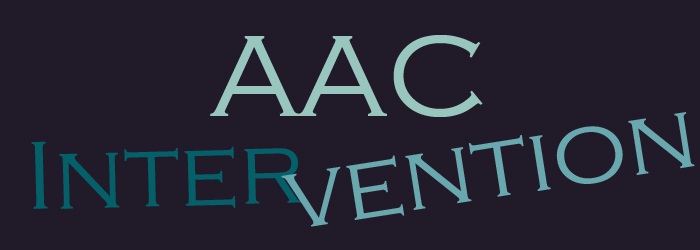

Sign In - Sign Up - Sign Off Overview
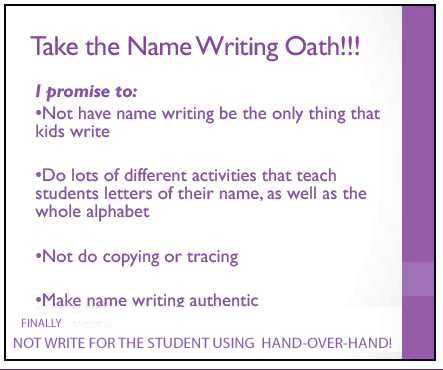 Name writing is a classic goal that sometimes stays on the IEP for decades! Students typically practice name writing by copying and tracing, which leads to little or no generalization. Signing our name is a very important goal, as it is a part of who we are, so it is very important – but we need to address it using strategies that work! This series of tips suggests several strategies that are interactive, motivating . . . and successful!
Name writing is a classic goal that sometimes stays on the IEP for decades! Students typically practice name writing by copying and tracing, which leads to little or no generalization. Signing our name is a very important goal, as it is a part of who we are, so it is very important – but we need to address it using strategies that work! This series of tips suggests several strategies that are interactive, motivating . . . and successful!
return to top

Sign In
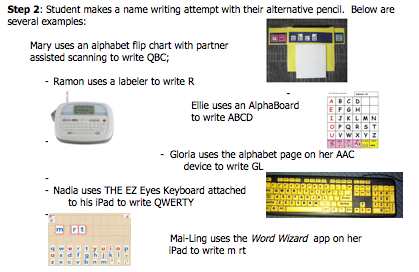
‘ Sign In’ refers to have students sign in each day, and tracking their name writing as data across a semester or year. Students can sign in for: school, therapy, afterschool activity, Scouts, etc.
February 2014

return to top

Sign Up
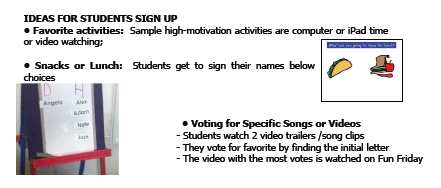 ‘Sign Up’ refers to having students sign up for desired activities or materials. This can be more motivating than signing in, especially when signing up for exciting events. Use actual sheets or PostIts so that students understand the POWER of signing up! ‘Sign Up’ refers to having students sign up for desired activities or materials. This can be more motivating than signing in, especially when signing up for exciting events. Use actual sheets or PostIts so that students understand the POWER of signing up!
return to top

Sign Off
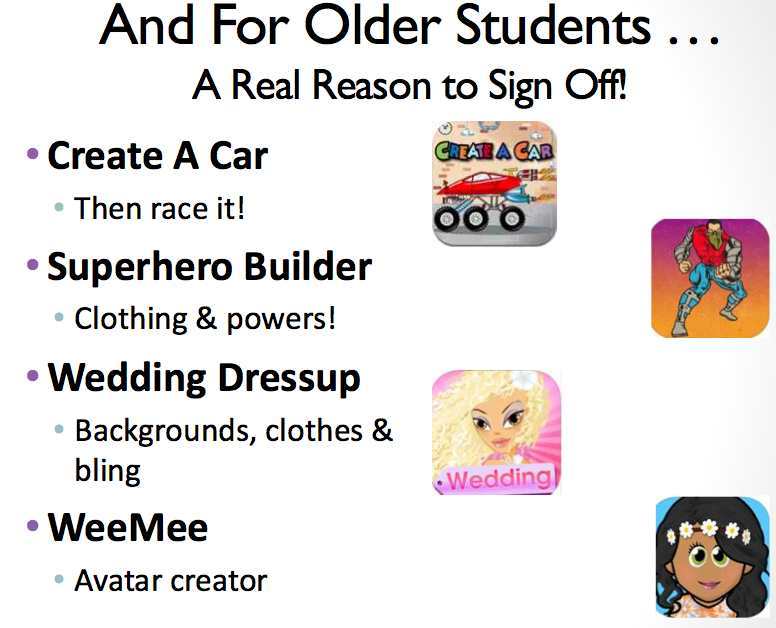
‘Sign Off’ refers to having students sign off when leaving or signing off on their personal work. This can be more motivating than signing in, especially when signing work to be shared or celebrated. Use actual materials (cards, artwork), so that students understand the power of signing off!
return to top
Sign Up Data Form
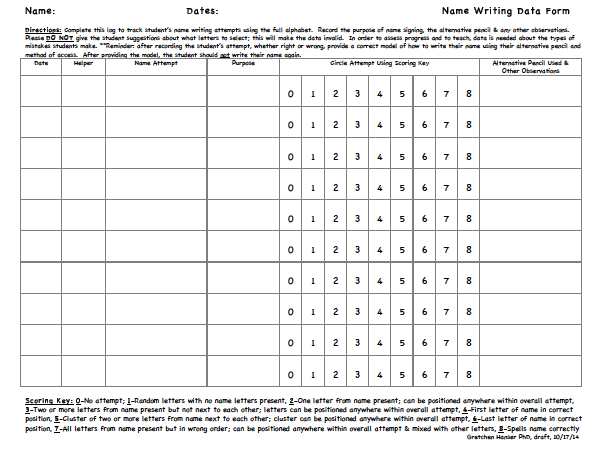 This rating scale is an attempt to help capture and quantify the progress students make with name writing before their name is spelled correctly. This rating scale is an attempt to help capture and quantify the progress students make with name writing before their name is spelled correctly.
**Based on assessing the students’ errors. Students’ errors are very valuable as they offer a window in to what they know.
*This rating scale was developed by informally looking at a group of students name writing samples across a year. Patterns and features that were seen across students’ attempts were identified as possible indicators for this rating scale.
return to top

Barrier Games Re-Visited with a Sweet Twist
 Here's a super fun 'barrier communication' game to play with students using AAC devices (or speech). Here's a super fun 'barrier communication' game to play with students using AAC devices (or speech).
'Barrier Games' are activities that teach students to share information across a boundary. In this case the two girls were on opposite sides of the table, and couldn't see each others' cookies!
June 2014

return to top
How To - Alternative Pencils: Getting Started with Early Writing

This tip shares strategies to support emergent writers in scribbling for a purpose, and receiving informative feedback. Dr. Hanser gives very explicit ideas for supporting partners in helping students:
- Before Writing: getting the right tool, which will often be an alternative pencil
- Setting a Topic: writing for a real reason
- After Writing: giving informative feedback
Dr. Hanser provides very clear guidelines and ideas for providing instructional feedback that is quick, interactive, and engaging.
return to top

Re-Reading
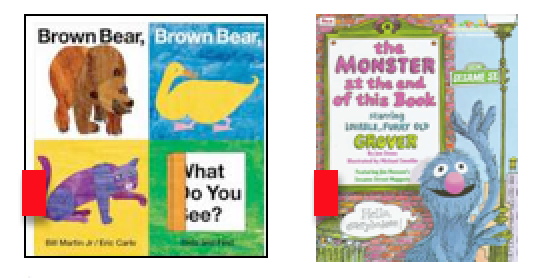 This tip provides background information for: This tip provides background information for:
- WHY we should read familiar texts over and over with children
- WHO is especially in need of hearing multiple re-readings
- HOW we can make this happen
Repeated read alouds are fun for both children and adults – so jump in and read it again . . . and again . . . and again!
August 2014

return to top

Read to Your Dog - The Importance of Practice Reading

This tip shares strategies to support emergent readers in ‘practice’ reading to their siblings, cousins, pets, stuffed animals, or dolls! This practice reading supports students in:
- Feeling like a reader
- Practicing concepts about print
- Developing fluency
This can be helpful for students who are emergent readers and early conventional readers. The tip also includes what NOT to do when practicing.
September 2014
return to top


This tip describes approaches to writing using
- Word banks
- Core + Content (Communication system)
- Alphabet
-
Samples are provided, and the importance of increasing use of the alphabet and core plus content for writing is emphasized.

NO MORE Letter of the Week

Letter of the Week is a common preschool and special education practice. This tip advices against that practice, and suggests alternatives.
This tip provides background information for:
- WHY we should stop doing letter of the week
- WHO this tip is for
- HOW we can do alternative activities that help students compare letters
November 2014
return to top

Alphabet Books for Older Students
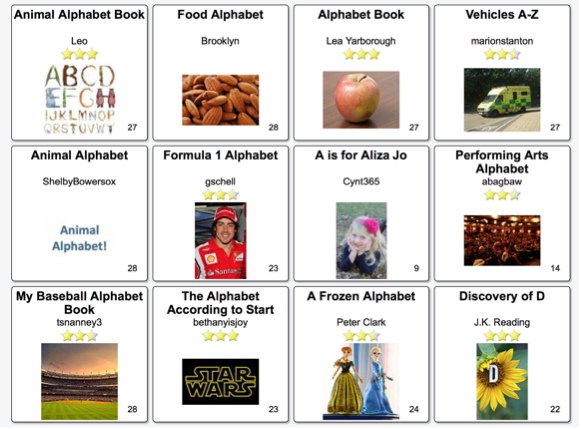
Alphabet books are a staple of preschool education. This tip shares ideas for finding and using alphabet books with older students.
This tip provides background information for:
- WHY we should share alphabet books with older students
- WHO this tip is for
- WHERE to find alphabet books that will engage and support older students who are emergent readers
return to top
 Our little idea guy marks the tip attachments. They are posted in pdf format. On the few occasions where there was more than one document to attach, we have "zipped" the files. Our little idea guy marks the tip attachments. They are posted in pdf format. On the few occasions where there was more than one document to attach, we have "zipped" the files.
PDF File Information
If you don't have Acrobat Reader on your computer, go to the following site:
http://get.adobe.com/reader/
Contact us if you need tips in another format.
|
